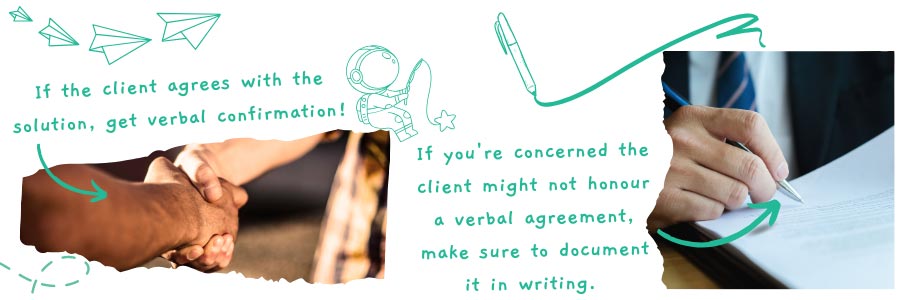Weekly Hands-on How-To powered by KnowHow
How to Resolve a Client Complaint

As a restorer, you're no stranger to solving issues—water damage, mold, fire restoration—you name it. But not all challenges are physical. Sometimes, the issues you face come in the form of client complaints, either from miscommunications or unmet expectations. Whether it’s due to an oversight by your team or just a simple misunderstanding, handling client complaints promptly and professionally is essential for maintaining trust, client satisfaction, and your company’s bottom line.
In the survey for our e-book Five Star Restorer, we found that having just one negative Google review could drive away 22% of prospective clients. For businesses doing an average of $2M a year, that’s a whopping $438k of lost revenue. So, we’re not just talking pennies here.
In this weekly how-to, powered by KnowHow, we’ll equip you with the strategies to transform complaints into opportunities for improvement and stronger client relationships. With these strategies, you'll ensure that complaints are resolved effectively, preventing them from turning into negative reviews.
So throw on that smile, and let’s review how to resolve a client complaint.
Note: This Weekly Hands-On How-To was based on this template in KnowHow’s template library.
Step 1: Prep Your Emotions, Settle Yourself
Before addressing the client's complaint, take a moment to check your emotional baggage. Set aside any feelings you may have about the client—whether they seem picky, passive-aggressive, or irrational. Clear your mind to get a better understanding of the root issue of their concern. A calm and objective mindset is crucial for resolving complaints effectively.
Step 2: Listen to Understand, Not to Reply
The goal of your interaction is to resolve the complaint. Encourage the client to express what is truly frustrating them. Gather as much information as possible before responding defensively or negating their points. Often, simply showing that you understand and empathize with their frustration can solve a significant part of the issue.
Step 3: Rephrase Their Complaint Until You Identify the Root Issue
Don’t risk a miscommunication at this stage of the process. Rephrasing the complaint back to the client is an effective strategy because it not only confirms your understanding but also demonstrates that you are actively listening and taking their concerns seriously. Once you’ve allowed the client to air their concerns, use the following example to confirm that you comprehend their issue.
- “So what I’m hearing is that you’re frustrated about [root issue] and the impact that it’s had on [result of root issue]. Is that accurate?”
Some examples of root issues include:
- Poor communication
- Workers not being punctual
- Not feeling heard
- Not getting what they ordered
Step 4: Evaluate and Problem Solve
If the root issue is within your power to fix and it makes sense to do so, move on to problem-solving. A good solution may be slightly uncomfortable for both parties. The client may not get exactly what they want (like a revision at a greatly reduced cost), and you may feel the revision isn't necessary.
If the solution is beyond your capability or not feasible (e.g., buying the client a new house), consult with management or inform the client that there’s nothing you can do. Don't leave them hanging.
Step 5: Confirm Before Implementing Resolution
When you propose a solution that the client agrees with, ensure you get verbal confirmation that it resolves the issue. Avoid suggesting a solution only to find it solves only part of the problem.
- “If we move forward to [___], can we both agree that this issue will be solved?”
If you have concerns about the client reneging on a verbal agreement, document it in writing.
Example:
- When [resolution] is implemented, both parties, [your company] and [client name], shall consider contract [#] complete and fulfilled, with no other remediation required.
- [Both parties sign and date]
From Complaints to Compliments
With the right approach, you can transform each client complaint into an opportunity for growth and enhanced client relationships. Each resolved complaint isn't just a win for that day; it's a stepping stone toward becoming the go-to restoration company in your area. Remember, the goal isn't just to fix the issue—it's to leave the client feeling heard, valued, and satisfied.
With KnowHow, this couldn’t be easier. KnowHow offers more than just templates; it provides a comprehensive suite of tools, on desktop or mobile, designed to streamline your processes, enhance communication, and deliver top-notch service every time. By equipping your team with tools like Magic Search, you ensure that everything they need to resolve a complaint is at their fingertips.
Visit tryknowhow.com to explore the resources that will revolutionize your complaint resolution process and set your team up for success.
Looking for a reprint of this article?
From high-res PDFs to custom plaques, order your copy today!









